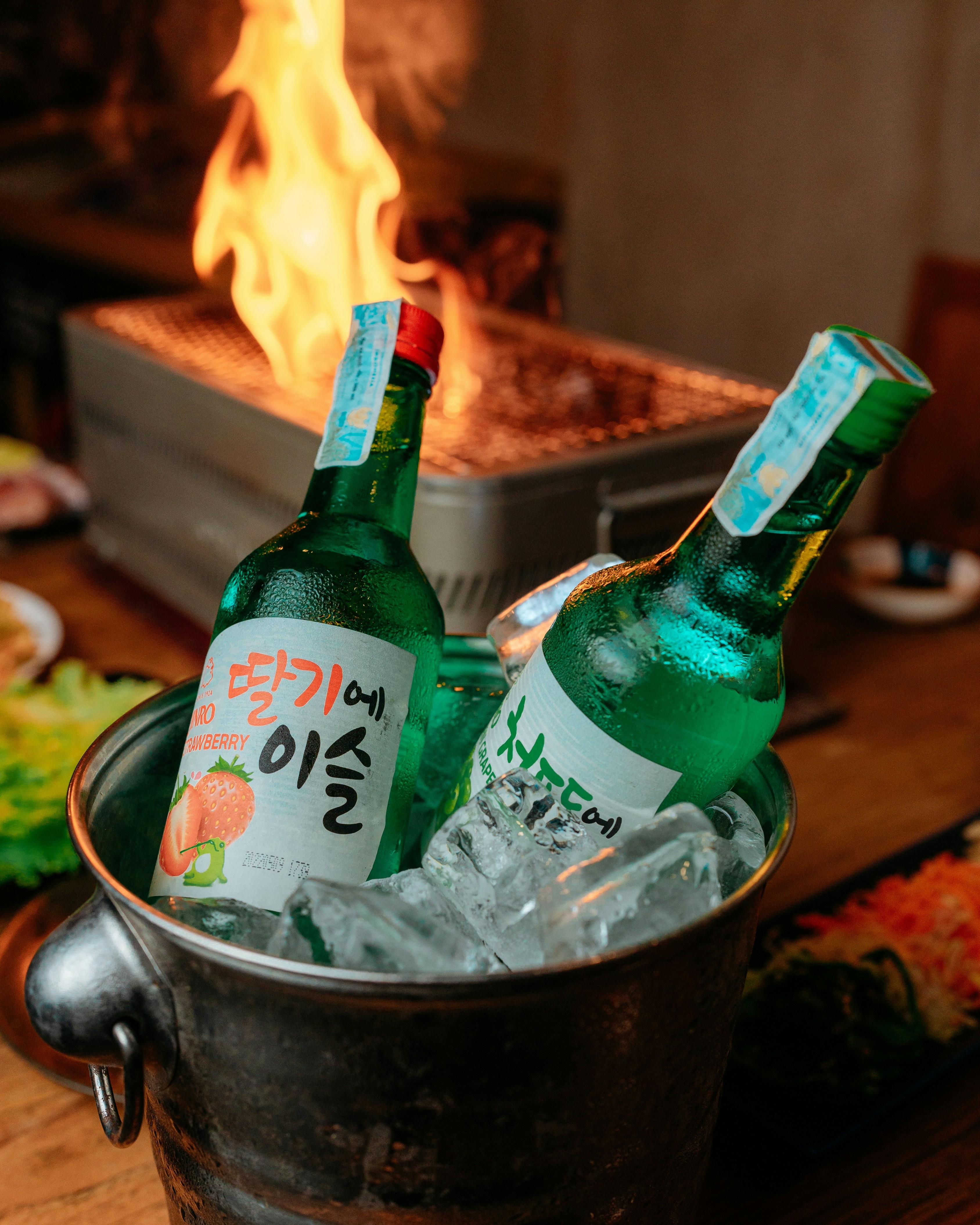Subscribe
Subscribe Now to receive Goldsea updates!
- Subscribe for updates on Goldsea: Asian American Supersite


Soju is not only the national drink of Korea but is also the best-selling liquor in the world. Although somewhat overlooked in America, soju is finally starting to get the respect it deserves. If you’ve never had the spirit, or even heard of it, here’s what you need to know.
Soju, which means “burned liquor” is a clear distilled Korean spirit comparable to vodka due to its relatively clean, neutral profile. Soju tastes slightly sweeter than vodka but doesn’t have the harsh alcohol burn due to having roughly half the percentage of alcohol at about 16% to 25% alcohol by volume (ABV). Similar to vodka, Soju is consumed chilled, traditionally as a shot, with food but it also mixes well into cocktails.
“In America, soju has been seen as a distilled spirit that doesn’t follow the rules of a distilled spirit,” Ryan Te general manager of New York’s Jungsik and former beverage director at Oiji said. “It’s almost watered down, and it can be served with the same license as a beer and wine license.” In fact, the liquor licensing laws in the states of California and New York specifically exempt the sale of soju of up to 25% alcohol from regulation relating to the sale of other distilled spirits making It more readily available.
Soju has a rich history dating back to 13th-century Korea, when it was traditionally made by distilling alcohol from fermented rice. A ban during the Korean war that prohibited the use of rice for soju production due to rice shortages inspired the use of alternative grains. Modern day soju often uses purified ethanol from sources like sweet potatoes, wheat and tapioca, which is then mixed with flavors and sweeteners.
Like most spirits, the process of making soju involves fermentation and distillation. First, rice grains are fermented by mixing hardboiled rice with yeast. This process on average takes two weeks, but some brands continue fermentation for up to 40 days. After repeating this process thrice, the final product is rice wine.
This wine is then boiled in a cauldron, which is fixed with a “soju guri" distilling tool. This is where the distillation process takes place. The total timeline of soju production lasts approximately three weeks, though some distillers age their soju in liquor tanks for a few months before bottling.
“The basic process of taking a rice, allowing it to get moldy, giving it the enzyme that breaks starch into sugar, and then the yeast converting that sugar into alcohol, that brewing process is sake,” says Don Lee, a veteran bartender and educator for the Japanese Sake and Shochu Makers Association. “And then if you take that, and you distill it, you have soju and shochu.” However, soju differs from both sake and wine in several ways.
Soju and sake are both sipping alcoholic beverages from East Asia, but they differ significantly in their production, flavor and alcohol content. Soju is distilled and has a higher alcoholic content with a relatively neutral taste. Sake, a Japanese rice pseudo-wine is brewed, has a alcohol content typically of 13% to 18%, and offers a wider range of flavors, including fruity, floral, or savory notes.
Though it’s often sweeter than sake, soju has a smooth, light, neutral flavor. Its strong alcoholic scent has given it the nickname “Korean vodka.” Like vodka, soju is also available in flavored varieties. Since sake is brewed rather than distilled, it doesn’t qualify as a liquor or technically as a wine. It is actually closer to beer than wine.
Soju generally is very low in sugar, with some sources stating it's close to zero. However, some flavored varieties may have higher sugar content. Sake typically contains more sugar than soju and wine. The average sake contains around 4 grams of sugar per 100 grams. Soju is also distinct from wine in several ways.
Soju and wine differ significantly in their production, alcohol content, and taste. Soju is a distilled spirit, whereas wine is a fermented beverage. Wine is usually made from grapes, with a wide range of flavors and alcohol content that typically falls between 5% and 23%. Soju is served chilled, in small glasses either neat or in cocktails. Wine is served in large glasses either chilled or at room temperature. Soju is always clear and still, but wine can be either flat or bubbly.
Dry wines like red, white, and rosé, generally have low sugar content, around 1-2 grams per 5-ounce serving. Sweet wines like dessert wines can have significantly more sugar, with some containing around 8 grams per 3.5-ounce pour. Again, soju’s near zero sugar makes it a healthier choice over both sake and wine. Besides low sugar content, soju has some additional health benefits.
Lke all alcoholic beverages, soju can be both healthy and unhealthy depending on consumption levels. Moderate soju consumption, particularly by those considered "flushers," may have some protective effects against certain conditions like hyperhomocysteinemia and low HDL cholesterol levels, according to a National Institutes of Health (NIH) study. Soju can increase "good" HDL cholesterol and improve blood circulation, potentially reducing the risk of heart disease.
A Seoul National University study indicated that minimal soju intake (one shot for men, one to two shots for women) could reduce stroke risk as well. Additionally, in Korean tradition, soju has been used as a digestive aid after meals, though this is not a scientifically proven benefit. A shot of soju after a heavy meal is believed to help with digestion, preventing bloating and discomfort. This practice is still common in Korea, particularly after consuming rich or spicy foods.
“Soju hasn’t received the respect or elegance as sake,” Te says, “but it’s on the cusp. It’s just a matter of time until it breaks out.” The most popular drink in Korea may soon be the next big thing in America.

JINRO soju, Korea's #1 selling brand.